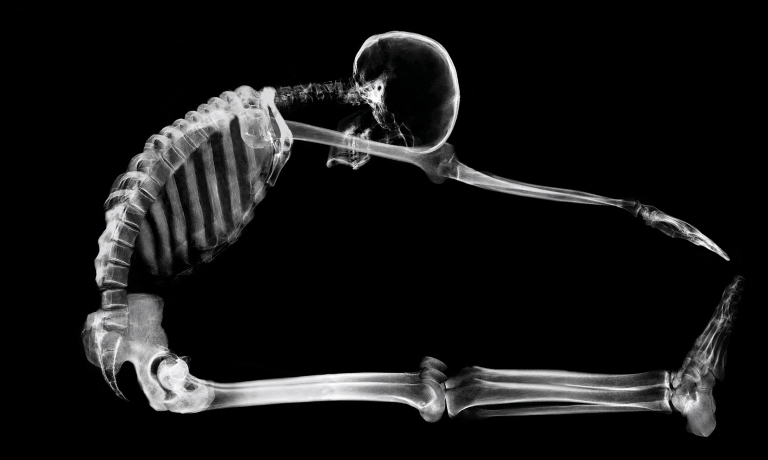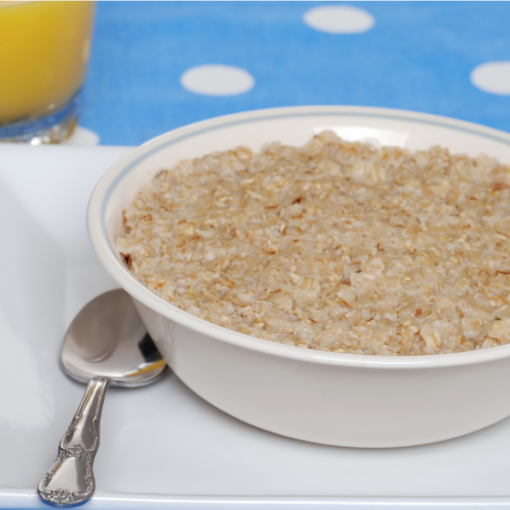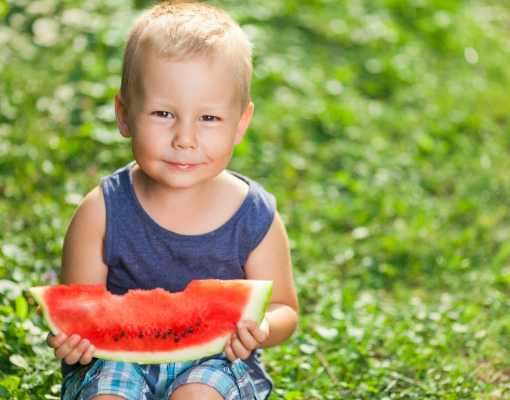
by Jack Norris, RD
[Correction (February 21, 20201): I no longer consider iodine to play a likely role in the higher fracture rates. See Bone Fractures among U.K. Vegans: Part 3 for more info.]
In November of 2020, a report from the European Prospective Investigation into Cancer and Nutrition, Oxford (EPIC-Oxford) found vegans to have a higher rate of bone fractures than meat-eaters, fish-eaters, and lacto-ovo-vegetarians (Tong, 2020).
I’ve been working diligently on an analysis ever since, which is finally ready. In my typical form of late, the article is long. But I think the information is important enough for vegans, vegan health professionals, and vegan advocates that I don’t want to send out just one post with a link to a long article most people won’t have time to read. Thus, I’m going to post it in serial form every 2-3 days.
A very quick summary is:
- Resistance training and activities that involve jumping are the most effective ways to maintain and increase bone mass.
- β-carotene was the only nutrient that I believe could explain a significant amount of the higher fracture rate among vegans. This surprised me since many vegan foods are high in β-carotene…but you do have to eat them!
- Zinc,
iodine,and selenium (especially in the U.K.) might have played a role in the higher fracture rates, so please make sure you’re aware of these nutrients (see Daily Needs).
The entire article is Bone Fractures among U.K. Vegans: Implications and Recommendations.
Here’s Part 1:
Introduction
In November of 2020, a report from the European Prospective Investigation into Cancer and Nutrition, Oxford (EPIC-Oxford) found vegans to have a higher rate of bone fractures than meat-eaters, fish-eaters, and lacto-ovo-vegetarians (Tong, 2020).
EPIC-Oxford is conducted in the United Kingdom and is one of two large cohort studies that contain a significant portion of vegetarians and vegans; the other is the Adventist Health Study-2 from the United States and Canada.
For this particular report, EPIC-Oxford recruited participants between 1993 and 2001, and followed them until 2016. At baseline, there were 29,380 meat-eaters, 8,037 fish-eaters, 15,499 vegetarians, and 1,982 vegans. The majority of participants had followed the same diet for years before the start of the study.
About half (55.4%) of the participants completed a second follow-up questionnaire in 2010 to see if they continued to follow their original diet. If a person had changed diet groups, any subsequent bone fractures were assigned to their new diet group (more info in Appendix A: Diet Category Changes).
Over the 17.6 year follow-up period, there were 3,941 fractures including 945 hip, 889 wrist, 566 arm, 520 ankle, 366 leg, 204 vertebral, 164 rib, 99 clavicle, and 188 miscellaneous (such as in the head, hands, and feet). The researchers weren’t able to determine how many fractures were due to trauma like auto accidents and how many were due to osteoporosis.
The study found that vegans had a 30% increased risk of total fractures (fully adjusted: HR 1.30, CI 1.08-1.56). Most of the increased risk was due to fractures of the hip (fully adjusted: HR 1.94, CI 1.35-2.77), leg (fully adjusted: HR 1.81, CI 1.04-3.15), clavicle (1.93, CI 0.82-4.54), and vertebrae (HR 2.42, CI 1.31-4.48).
When the study population was divided by sex, compared to meat-eaters, the vegan men didn’t have a significantly higher rate of total fractures (HR 1.18, CI 0.85-1.62) while the vegan women did have a significantly higher rate (HR 1.53, CI 1.24-1.88). When the study population was divided into those with a body mass index (BMI) of <22.5 and ≥22.5, vegans with a lower BMI had a significantly higher risk of total fractures (HR 1.66, CI 1.32-2.08) while vegans with a higher BMI did not (HR 1.10, CI 0.80-1.49).
There’s no question that vegans in EPIC-Oxford had a higher rate of bone fractures. But there’s a difference between vegans having a higher rate of fractures due to being vegan versus due to another reason. The rest of this article is an attempt to dispassionately examine the evidence to try to figure out what, if anything, can or needs to be done to improve the fracture rates of vegans.
Miscellaneous Concerns
There are a few concerns that we can quickly address with the information we have at this time.
Fiber: Some people suggested that vegans in the EPIC-Oxford cohort have generally poorer diets as shown by their lower fiber intake (28.9 g/day; Sobiecki, 2016 Table 2) compared to the fiber intake of vegans in Adventist Health Study-2 (46.7 g/day, Rizzo, 2013). Most of this discrepancy can be attributed to the different ways of measuring fiber between the two studies; if EPIC-Oxford had used the same method as Adventist Health Study-2, the vegan fiber intake would be in the range of 36.4 to 44.3 g/day. See Appendix B: NSP and AOAC Fiber for details. It’s also worth noting that in EPIC-Oxford the fiber intake for vegan women (26.4 g/day) and men (27.7 g/day) were significantly higher at baseline than for meat-eating women (18.9 g/day) and men (18.7 g/day) (Davey, 2003), suggesting that not eating enough whole plant foods is unlikely to be the explanation for the higher vegan fracture rate.
Animal agriculture: A funder of EPIC-Oxford is listed as Wellcome Trust Our Planet Our Health (Livestock, Environment, and People). This is not a pro-livestock group. According to their website, “LEAP – Livestock, Environment and People – is a Wellcome funded project investigating the environmental, human health, economic and social consequences of changing patterns of global consumption of meat and dairy. The project is based at the University of Oxford and we work with a wide network of formal and informal collaborators around the world.”
Self-reporting: Some suggested the EPIC-Oxford results were unreliable because people had self-reported their diet and exercise. That could be an understandable concern of people unfamiliar with how large observational studies are conducted, but self-reporting is the only practical way to measure diet in epidemiological studies which involve tens of thousands of people. An effort is normally made to determine how valid the surveying methods are and to eliminate any self-reporting that seems suspect.
Censoring due to death: See Appendix C: Censoring Due to Death for a short explanation as to why censoring due to death probably didn’t significantly impact the results.
Limitations of Observational Research
Results reported in nutrition research are almost always based on the idea that if a finding has a 5% chance or less of being due to random chance then it’s statistically significant. At Vegan Health, we normally follow the rule that statistically significant findings are meaningful while non-statistically significant findings are not. In other words, if group A has a 30% higher relative risk than group B, but the difference isn’t statistically significant, we say that group A has the same risk as group B.
A 5% threshold for statistical significance has arguably resulted in too many false-positives. Grimes and Schulz (2012) argue that relative risks in cohort studies should be less than 0.5 or greater than 2.0 for a finding to be considered worthy of interest. (For a related discussion also see Ioannidis, 2008.)
Using Grimes and Schulz’s standard would likely wipe out many findings, both pro and con, regarding vegan nutrition. While this article is written using the usual 5% standard we should keep in mind that many of the associations described herein could be spurious despite reaching that threshold.
Fracture Rates in Context
What sort of difference in fracture rates does the increase found in vegans in EPIC-Oxford mean for the average person?
Based on Table 3 in Tong et al. (2020), the chance of a meat-eater suffering a fracture over the course of 10 and 20 years is 4.7% and 9.4% respectively; for a vegan, risk increases to 6.7% and 13.3%. Vegans, therefore, have a 3.9% higher chance of experiencing a fracture over 20 years than do meat-eaters.
How do fracture rates in EPIC-Oxford compare to the greater population of the United Kingdom? I made a crude comparison and they appeared to be roughly similar (see Appendix D: Fracture Rates in the U.K. Compared to EPIC-Oxford).
Coming up next in Part 2 is:
- Body Mass Index and Caloric Intake
- β-carotene and Vitamin A
- Zinc
References






5 thoughts on “Bone Fractures among U.K. Vegans: Part 1”
Could this be because vegans are more active (I’m making an assumption here) therefore more at risk of doing sports and other activity that make them at risk of fractures? I noticed you mentionned vegans with a higher BMI didn’t have an increased risk of fractures.
Sébastien,
> Could this be because vegans are more active
The results were adjusted for physical activity based on the categories of “inactive, low activity, moderately active, very active, and unknown.” It’s possible these categories weren’t accurate or specific enough to differentiate between meat-eaters and vegans, but I would rate it a low order of probability that more dangerous physical activity would have played a meaningful role in the results.
I felt there was still residual confounding as nowhere in the paper was it clear as to how adjustments were made for BMI especially in the low BMI – categorisation would have left a lot of residual confounding as the relationship between BMI and fractures is non linear
Excellent article, thank you. I look forward to reading the next one, and I really appreciate all the work that has gone in to this and other articles. Please could I request that you define any abbreviations that you use at the first occurrence? In this case, it would be helpful to define HR and CI, presumably as hazard ratio and confidence interval, and clarify that it is a 95% CI if this is the case. Many thanks.
Vicky,
Thank you for your kind words and interest in our articles! You’re the first person to ask for this level of detail. I think I’ll experiment with an abbreviation section at the bottom of the articles to smoothly add this info. Look for it next time. Thanks again!